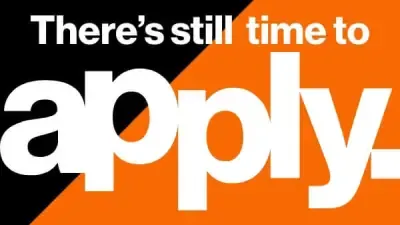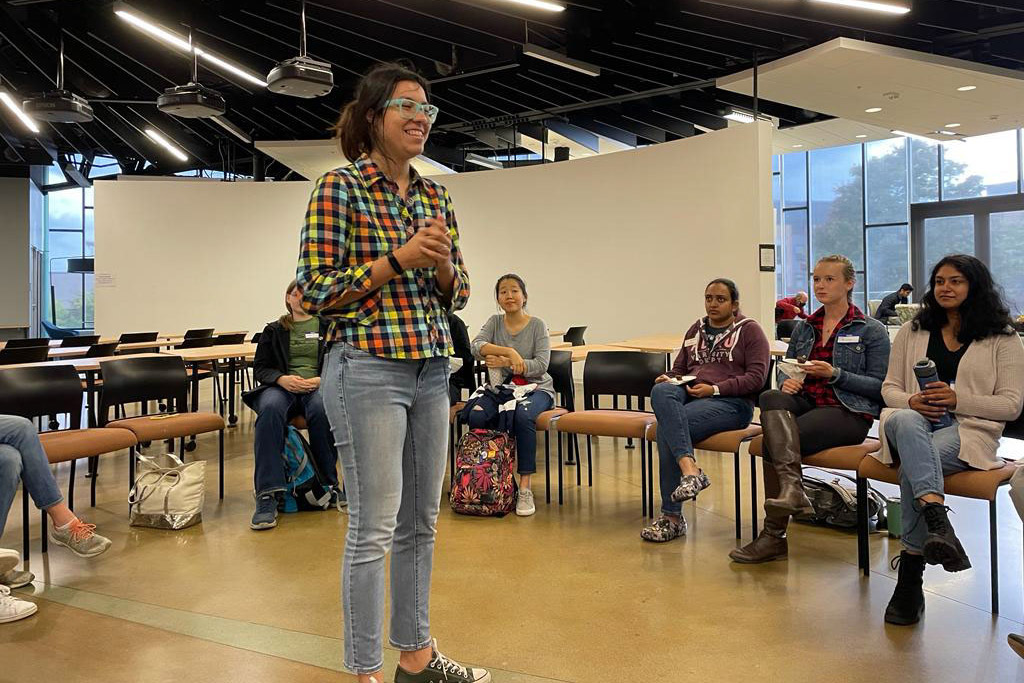Mechanical and industrial engineering Ph.D. student leads and enhances graduate student communities
Samantha Sorondo served on the e-board of the Doctoral Student Association and founded Women in Graduate School
Chamodhi Polgampola
Samantha Sorondo speaks at a Big Sister Little Sister graduate mentorship event for Women in Graduate School. Sorondo has been studying metal 3D printing and founded WIGS and served as vice president of student affairs for the Doctoral Student Association.
Samantha Sorondo, a fifth-year student in the mechanical and industrial engineering Ph.D. program from San Juan, Puerto Rico, has taken on leadership roles in the graduate student community in addition to her research on metal 3D printing. After proposing the idea for the Ph.D. N’ Chill events and working with the Doctoral Student Association, she received support and eventually became the organization’s vice president of student affairs. Sorondo also founded Women in Graduate School.
What does your work as vice president of student affairs for the Doctoral Student Association entail?
As vice president of student affairs for the Doctoral Student Association, I have been involved in organizing events and initiatives to support Ph.D. students at RIT. I co-founded Ph.D. N’ Chill, a Ph.D. student support group, and co-organized a Thanksgiving potluck for Ph.D. students. I have also compiled resources for Ph.D. students and helped connect them with appropriate resources for their research and personal lives.
What drove you to start Women in Graduate School?
I founded Women in Graduate School (WIGS) to create a space for women to connect and support each other in their academic and professional pursuits. I wanted to address the gender disparities in academia and provide a supportive community for women graduate students at RIT. The idea for WIGS came about after adding all my female graduate student friends to a group chat and organizing a few brunches. I realized there was a need for a group to cater to these students, whose needs differ from the doctoral student community, which excludes master’s students, and the general graduate student population, which is mostly men. WIGS is targeted toward all women-identifying and gender-minority graduate students. The aim is to build a dynamic and safe community that promotes personal and professional growth.
What are some of your favorite memories from your leadership positions?
Some of my favorite memories from my leadership positions with the DSA and WIGS include organizing the winter wear shopping trip for graduate students without vehicles to buy winter necessities. I am also proud of co-authoring a report on the Ph.D. Student Stipend Survey, which led to conversations with Ph.D. students, faculty, Ph.D. program directors, college deans, and the provost to increase in the minimum Ph.D. stipend for fall 2022. I have enjoyed seeing positive responses from students who have benefitted from the resources and events we have organized. I’m really happy with what the Ph.D. student community has become; many friendships have bloomed. I think that nowadays, a lot of people want change, but nobody does anything about it. And I’ve found that it’s a lot easier to change things than you would expect because people want change, and they’re willing to support you. In the past few years, I’ve learned that nothing is impossible, and you just have to give yourself a chance.
Where will your studies lead you?
My research has focused on metal 3D printing. This process involves depositing layers of steel onto some surface, and I researched how the geometry of that surface affects 3D prints. Right now, metal 3D printing remains expensive and complex, so it isn’t widely used. But it has a ton of potential for repairing structures that would be expensive and unnecessary to fully replace, like turbine blades, or whose parts are no longer being manufactured. And it could be used to create a sustainable, closed system for creating tools and parts on demand that could be recycled to make new 3D prints when no longer in use. Overall, metal 3D printing has the potential to help reduce greenhouse gas emissions by reducing demand on the steel industry. Through my studies, I’ve acquired the skills to be able to jump into any part of the product development process, and so I’d love to apply my knowledge of metal 3D printing in any part of this process.












